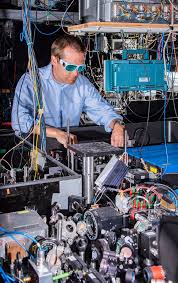
Breaking News
 LIVE ELECTION RESULTS: New York mayor, NJ & VA governor, Prop 50, Trump endorsements, latest vote
LIVE ELECTION RESULTS: New York mayor, NJ & VA governor, Prop 50, Trump endorsements, latest vote
 Sen. Markwayne Mullin Reveals Schumer Held Secret BACKROOM MEETING...
Sen. Markwayne Mullin Reveals Schumer Held Secret BACKROOM MEETING...
 RIP NYC - Muslim Communist Zohran Mamdani Wins New York City Mayoral Race
RIP NYC - Muslim Communist Zohran Mamdani Wins New York City Mayoral Race
 Dramatic Footage Shows UPS Cargo Jet Crashing At Louisville Airport
Dramatic Footage Shows UPS Cargo Jet Crashing At Louisville Airport
Top Tech News
 Japan just injected artificial blood into a human. No blood type needed. No refrigeration.
Japan just injected artificial blood into a human. No blood type needed. No refrigeration.
 The 6 Best LLM Tools To Run Models Locally
The 6 Best LLM Tools To Run Models Locally
 Testing My First Sodium-Ion Solar Battery
Testing My First Sodium-Ion Solar Battery
 A man once paralyzed from the waist down now stands on his own, not with machines or wires,...
A man once paralyzed from the waist down now stands on his own, not with machines or wires,...
 Review: Thumb-sized thermal camera turns your phone into a smart tool
Review: Thumb-sized thermal camera turns your phone into a smart tool
 Army To Bring Nuclear Microreactors To Its Bases By 2028
Army To Bring Nuclear Microreactors To Its Bases By 2028
 Nissan Says It's On Track For Solid-State Batteries That Double EV Range By 2028
Nissan Says It's On Track For Solid-State Batteries That Double EV Range By 2028
 Carbon based computers that run on iron
Carbon based computers that run on iron
 Russia flies strategic cruise missile propelled by a nuclear engine
Russia flies strategic cruise missile propelled by a nuclear engine
 100% Free AC & Heat from SOLAR! Airspool Mini Split AC from Santan Solar | Unboxing & Install
100% Free AC & Heat from SOLAR! Airspool Mini Split AC from Santan Solar | Unboxing & Install
Record-breaking atomic clocks precise enough to measure spacetime distortions

In recent tests run by the National Institute of Standards and Technology (NIST), experimental atomic clocks have achieved record performance in three metrics, meaning these clocks could help measure the Earth's gravity more precisely or detect elusive dark matter.
The NIST clocks are made up of 1,000 ytterbium atoms, suspended in a grid of laser beams. These lasers "tick" trillions of times per second, which in turn cause the atoms to consistently flicker between two energy levels like a metronome. Measuring these allows atomic clocks to keep time incredibly precisely, in some cases losing only a single second over 300 million years.
But there's always room for improvement, in this case by adding thermal and electric shielding to the devices. By comparing two experimental atomic clocks, NIST scientists have now reported three new records in the devices at once: systematic uncertainty, stability and reproducibility.
Systematic uncertainty refers to how accurately the clock's ticks match the natural vibrations of the atoms inside it. According to the team, the atomic clocks were correct to within 1.4 errors in a quintillion (a 10 followed by 18 zeroes).
Stability is a measure of how much the clock's ticks change over time. In this case, the NIST clocks were stable to within 3.2 parts in 1019 (a 10 with 19 zeroes) over the course of a day.
And, finally, reproducibility is measured by comparing how well two atomic clocks remain in sync. Checking the two clocks 10 times, the team found that the difference in frequency of their ticking was within a quintillionth.



